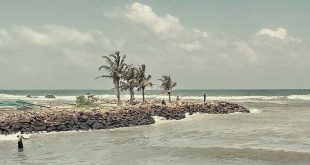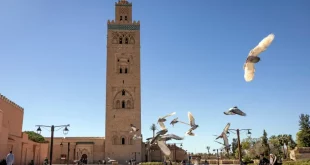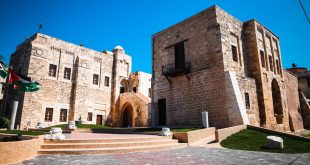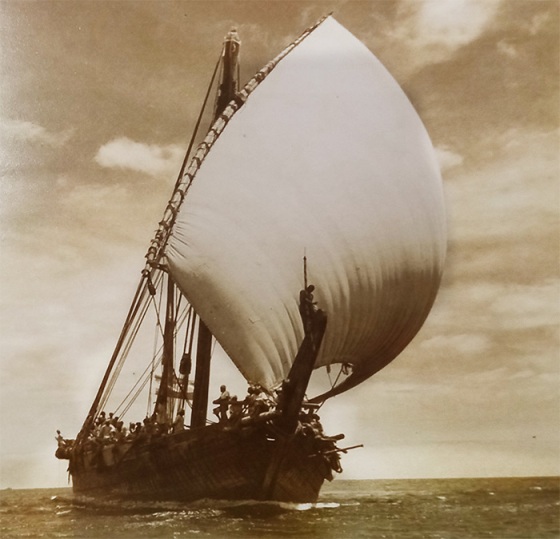 An Arab Dhow, C.1900. Melville Herskovits Library’s Winterton Collection
An Arab Dhow, C.1900. Melville Herskovits Library’s Winterton Collection
Author Asiff Hussein, Vice President of Outreach, Centre for Islamic Studies Harmony Centre, on the Muslim Contribution to our Nation…
by Ifham Nizam
Q: You have written extensively on the Muslim contribution to Sri Lanka. How significant do you think that contribution has been?
A: The Muslim contribution to our nation has been immense but sadly little known. The Arabs of old were great mariners and merchants and were engaged in maritime or sea-borne trade in a big way. They imported foreign luxuries, such as horses and ceramic ware ,and in turn exported local products, such as gemstones, spices and even elephants which had a great demand overseas. As such they were much appreciated by both the local monarchs and the general populace.
Some of these Arabian merchants settled in our enchanting island and espoused local Sinhalese and Tamil women. One name they bestowed on our island was Jaziratul Yaqut which some believed referred to our precious stones and others our beautiful women who must have been very much prettier back then. The major draw, of course, was the belief that Sri Lanka, or Serendib, as they also called our country, was the first home of our forefather Adam, following his fall from paradise.
The fact that they were maritime traders is borne out by their earliest settlements which were in the coastal areas, such as Mannar, Beruwala and Galle. It is obvious that only those who came by way of sea would settle first in the littoral or maritime districts. It was only in later times that they settled in the hinterland and interior of the country. This is also supported by the fact that their descendants, known as the Moors, eventually came to adopt Tamil as their mother tongue. The obvious reason was when they first settled here, it was the Tamil-speaking communities, such as the Karaiyar and Mukkuvar fisherfolk, that dominated our coasts. So when they first settled here, they probably married Tamil-speaking women. However, a bit of their original Arab vocabulary survived among their Moor descendants in basic words, such as Ummawhich is from the Arabic Umm‘mother’ and Vappa, a Tamilised form of the Arabic Babaused for father or grandfather.
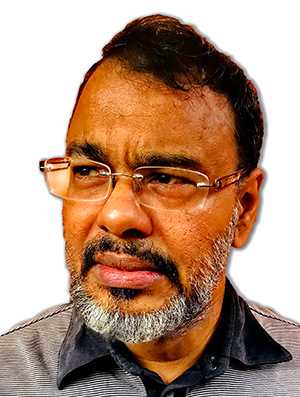
Asiff Hussein
In later times as these Arabs moved inland, they married Sinhalese women as well. This is suggested by the fact that those Moors settled in the interior regions of the old Kandyan Kingdom preserved traditions of intermarriage with Sinhalese women, such as among the Moors of Akurana and the Gopala Behethge family, not to mention the fact that many also bore Sinhalese ge-names some of which may have been acquired by way of Sinhalese ancestresses whom their forebears espoused under the Binna or matrilocal form of marriage then quite popular among the Kandyans. This is not to say that all Moors are paternally Arabs, but rather that the core of the early Moor community was composed of people of Arab origin but over time this was considerably diluted by later accretions of peoples originating from the Indian subcontinent as well as Sinhalese and Tamils. In fact, genetically the majority of Moors of today may well prove to be of South Asian origin. Recent genetic studies in fact indicate that they are genetically very close to the Sinhalese, even more than the Tamils.
Q: Can you be more specific about the exact nature of the contribution made by the Arabs and other Muslims to our nation?
A: Of course. The Arabs played a huge role in making our island known to the rest of the world. In fact, in the medieval era, Sri Lanka was known to the rest of the world through the medium of the Arabs. The very name Ceylon by which we were known until fairly recently is derived from a word of Arabic origin Saylanby which the Arabs of the 10th to the 14th century knew our country, including the famous Moroccan traveller Ibn Battuta. It was in later times, from the 16th century onwards, that we hear the European colonial powers employing it in forms like the Portuguese Ceilao and the English Ceylon and the obvious inference is that these terms had their origins in the Arabic Saylan.
That’s not all. Sri Lankans and especially the Sinhalese knew much of the rest of the world through the medium of the Arabs. This is borne out by the classical Sinhala name for Egypt which is Misarayawhich comes from the Arabic term Misr. It was only in later times that Sinhala employed the word Egyptuvadue to European influence. Then take the old Sinhala term for Negro or black person which is Kavisi. This too comes from an Arabic word Habashi which literally means an Abyssinian or Ethiopian.
Other vestiges of Arabic influence on the Sinhala language could be seen in terms connected with maritime trading. One is MosamaorMosam-Sulanga which in Sinhala refers to the Monsoons. The word comes from the Arabic Mawsimmeaning ‘season’. Since the Monsoons were Seasonal winds that assisted in seafaring and maritime trading they may also be known as Trade Winds. it was this word of Arabic origin that was eventually adopted into Sinhala to mean the Monsoons.
Another very telling word is Malimaya used in the olden days to mean a ‘navigator’ in Sinhala. This comes from the Arabic word Muallimmeaning a ‘master’ and by extension a pilot or captain of a ship. In fact the name of the Muslim navigator who assisted Vasco Da Gama sail eastwards has come down to us as Malema Cana, the first element of which is obviously from the Arabic Muallim. It is the same word that is also the origin of the Sinhala word for compass, which is Malimava or Malima-Yantraya, now adopted as the symbol of the National People’s Power which is expected to make significant electoral gains in the upcoming elections.
Q: How would you look at the cultural contribution made by Muslims to Sri Lanka? Has it been that significant?
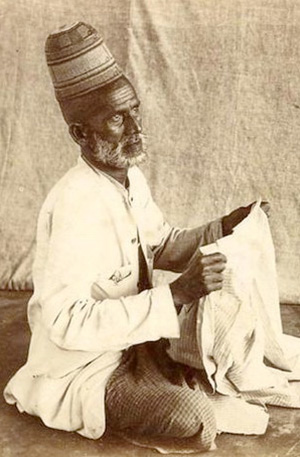
Moor Trader Late 1800s
A: It has been considerable. Take for example the sweetmeat Aluvawhich actually comes from an Arabic word Halwa simply meaning ‘sweet’. Another is Saruvat or Sherbet which likewise comes from the Arabic Sharbat meaning ‘drink’, When it comes to articles of dress, there is one such item that survived until recent times. That is the Saruvalaya which meant a loose kind of trousers and derives from the Arabic word for trousers Sirwal. Such trousers were worn by Sinhalese farmers when working in the fields in certain parts of the country such as the eastern hinterland instead of the more common amudeor loin-cloth. Another was gold lacing which was known in Sinhala as Kasav and which comes from the Arabic word Qasab.
The Malay cultural influence has been even more profound. The traditional lower garment of the Sinhala male, the Sarong or Saramaas it is called in Sinhala comes from the Malay word Sarung which refers to the same garment. Fancy ear ornaments known among Sinhalese women to this day as Karabu actually comes from a word of Malay origin Krabu or Kerabu. Traditional Sinhala sweetmeats such as Dodol, Seenakku and Bibikkan are also of Malay origin. Dodol is a purely Malay word that refers to a similar item of food in the Malay world. Seenakku comes from the Malay word Cheena-Kuwe or ‘Chinese Cake’ and Bibikkan comes from the Malay Bikang which refers to a similar cake prepared in the Malay world.
The Malays even had an impact on our popular pastimes. This includes the playing of the Rabana or Large One-Sided Drum which comes from the Malay Rebana, and Kite-Flying which we may suppose was originally introduced by the Malays here since the Sinhala word Sarungalaya for kite has no known Aryan or Dravidian etymology but in all probability derives from the Malay Sarang‘cross laths of split bamboo‘ or Sarenkol, a Sundanese or Malay dialectal form meaning ‘a small tubed bamboo, crooked at every joint, diverging at some angle from the preceding one’, it being understood that bamboo is best suited for the production of kite frames.
Q: In conclusion what would you expect from the other communities in respect of the Muslims given the immense contribution the followers of Islam have made to our nation?
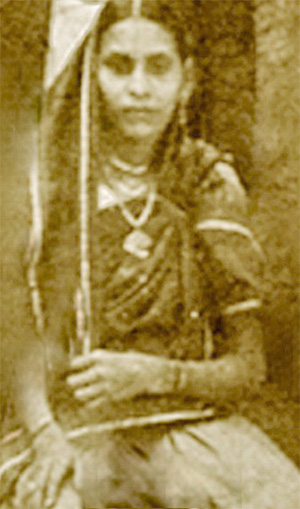
A Moor Woman, early 20th century
A: What I would reasonably expect is respect. As Muslims we respect all other communities since religious tolerance is a well established teaching of our faith. Sadly, one does not see a corresponding show of respect among certain sections of other communities. Political indoctrination based on communal politics and also vernacular social media subtly influenced by Western Islamophobic ideas are largely responsible for this. In the villages and rural areas in general, one never finds any sort of communalism, this is basically a suburban malady.
But this needs to stop and it’s high time it stopped. Muslims are insulted for the way they dress and for what they practice. A notable example is the head covering of Muslim women. Christian nuns wear the same without any sort of discrimination but when a Muslim woman wears it, the racists are quick to pounce on it as an expression of religious extremism. In the olden days too, Muslim women covered their heads but it was never a problem to anybody, so why should it be now?
Another is female circumcision which local Muslim women practice on their daughters. This is an obligatory Islamic duty according to the dominant Islamic school of jurisprudence here, the Shafi school and is also supported by numerous ahadith or sayings of the Prophet Muhammad (Peace Be Upon Him). A recent survey conducted by the Family Planning Association of Sri Lanka in fact showed that the vast majority of Muslim women supported the practice and all indications are that they will continue to practice it regardless of what others say since they believe it to be sacrosanct religious obligation. Besides, what we practice here is a harmless practice that poses no threat to health and in fact if done the proper Islamically prescribed manner by removing the prepuce or fold of skin covering the clitoris confers considerable health and sexual benefit by enhancing sex pleasure rather than diminishing it.
Sadly, this religious duty practiced for countless generations of Sri Lankan Muslim women has been degraded by people with racist attitudes and falsely compared to the barbaric practice of Female Genital Mutilation as practiced in some African countries. The attitude has only been made worse by books like Waris Dirie’s Desert Flower translated into Sinhala as Kantare Kusuma. Such books are very dangerous as they give the masses a warped picture of Islamic practices, and should actually be banned as hateful literature meant to create religious disharmony. The manner in which these works have negatively impacted people engaged in Sinhala social media is frightening to say the least.
In conclusion all I can say is one has to give respect to get respect. This is a precondition, a sine qua non, for religious harmony. But to achieve this, prevailing attitudes need to change for the better. To understand the other is very important in this day and age.
 Sri lanka Muslims Web Portal Diversity and Inclusiveness
Sri lanka Muslims Web Portal Diversity and Inclusiveness
